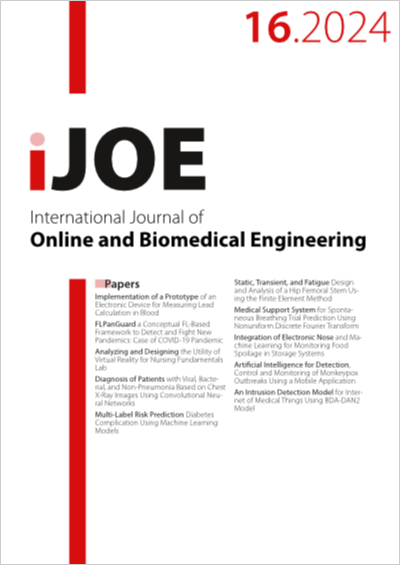Analyzing and Designing the Utility of Virtual Reality for Nursing Fundamentals Lab
DOI:
https://doi.org/10.3991/ijoe.v20i16.51721Keywords:
3D virtual reality, Nursing, analysis and design, MDCL, Hierarchical Task Analysis, UML, design requirmentsAbstract
The COVID-19 pandemic prompted many universities worldwide to adopt distance learning, creating a significant gap in hands-on skills training, particularly in health and nursing education. To address this challenge, this study presents the analysis and design of a virtual reality (VR) application, NursingXR, developed to support training of students in performing procedures related to the fundamentals of nursing labs in undergraduate programs. The study proposes a hybrid approach that utilizes the multimedia development life cycle (MDLC) alongside hierarchical task analysis (HTA) and unified modeling language (UML) diagrams to provide developers with essential information for implementing NursingXR. A prototype was developed as a validation step, based on the analysis, design and data/material collection phases. Additionally, interviews with nursing instructors were conducted to explore how the platform can complement traditional learning and training modules. The findings indicate that the proposed approach is effective for developing VR applications in the healthcare domain.
Downloads
Published
2024-12-19
How to Cite
Ewais, A., & Obeid, M. F. (2024). Analyzing and Designing the Utility of Virtual Reality for Nursing Fundamentals Lab . International Journal of Online and Biomedical Engineering (iJOE), 20(16), pp. 27–51. https://doi.org/10.3991/ijoe.v20i16.51721
Issue
Section
Papers
License
Copyright (c) 2024 Ahmad Ewais (Submitter); Mohammad F. Obeid

This work is licensed under a Creative Commons Attribution 4.0 International License.



